With the kickoff to the 2018 season just a couple of months away, it's time to dive into the Pro Football Focus database and rank every roster as it stands now, at the end of June, focusing on the expected starters and how they look in our metrics. PFF grades every player on every play of every game of the NFL season, allowing us a comprehensive look at what each player has to offer.
Below, we rank the overall roster talent of every NFL team from 1-32 and offer up projected starting lineups on offense and defense. We're also including our grades for each player from the 2017 season, as well as analysis on which players might improve or decline this season.
Jump to a team:

1. Philadelphia Eagles
Biggest strength: As a part of the most dominant defensive front in football, Brandon Graham had the best year of his career in terms of sack total while continuing to cement his place as one of the most consistent edge defenders at producing pressure. For the second straight year, Graham registered an elite grade, and since 2012, he has averaged just 5.8 pass rushes per pressure generated, which is second to only Von Miller in that span.
Biggest weakness: The departure of Mychal Kendricks, who was the team's highest-graded linebacker, leaves a question mark over the Eagles' linebacking corps, with fifth-year player Corey Nelson set to fill the void. Nelson played only 43 snaps last season, and he ended the year with a grade of 64.4, his lowest since 2015.
By the numbers: A season-ending knee injury robbed us of the conclusion of a spectacular breakout sophomore campaign from quarterback Carson Wentz, but fans will nevertheless be excited by what they saw. Wentz showed dramatic improvement under pressure last season and finished with the league's fourth-best passer rating on pressured throws (81.7), an incredible 48.9 points above his 2016 mark.

2. Atlanta Falcons
Biggest strength: While his overall play did take a slight step back from his 2016 MVP campaign, quarterback Matt Ryan still played at a high level. The box score may not show that, but Ryan suffered some awfully bad luck in 2017 and threw a league-leading eight "unlucky" interceptions (tipped passes, receiver errors, etc.). Ryan ended the year tied for second in overall PFF grade while ranking third in adjusted completion percentage and throwing only five turnover-worthy passes all year.
Biggest weakness: Interior defensive lineman Terrell McClain struggled for the second consecutive year and earned a grade of just 41.8 in 2017, his lowest since his rookie season. McClain finished the campaign as the only 3-4 defensive end in the bottom three in both run-stop percentage and pass-rush productivity.
By the numbers: Once again, Julio Jones was the most productive pass-catcher in football last year, averaging 3.08 yards per route run, the highest mark in the league. In 12 years of grading, just eight players have managed to end a season with an average of 3.00 yards per route run or higher -- Jones has now done it for three straight seasons.

3. New Orleans Saints
Biggest strength: Edge rusher Cameron Jordan produced his best season to date last year, and he ended the campaign as our highest-graded edge rusher. Jordan produced 74 quarterback pressures in 2017, the eighth most among edge defenders, while also adding 10 batted passes, which was more than any other player in the league.
Biggest weakness: Linebacker A.J. Klein struggled mightily in his first year as a Saint and recorded a grade of just 38.6, the seventh-lowest mark among linebackers and the lowest grade of his career. During the season, Klein struggled against the run, accumulating just 13 stops from his 238 run-defense snaps, while missing eight tackles in the process.
By the numbers: Drew Brees remains one of the best quarterbacks in the game, but Saints fans will likely be more excited about second-year running back Alvin Kamara, who performed incredibly well last season. He averaged 6.1 yards per carry and 3.83 yards after contact per carry, which both rank first among all rookies in the PFF era (2006-present). In the passing game, Kamara racked up an average of 2.84 yards per route run, which also ranks first among all first-year running backs.
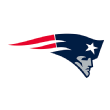
4. New England Patriots
Biggest strength: It's Tom Brady. Do we need to say anything else? Brady led all QBs last season with a 95.5 grade -- his third straight season north of 93.0 -- and his 96.6 passer rating under pressure was higher than the passer rating that 22 quarterbacks earned from a clean pocket.
Biggest weakness: The linebacking corps -- specifically the middle, which is currently occupied by Elandon Roberts. Roberts ranked 69th among interior linebackers last season with a 41.6 grade, which was regression from the 61.1 he posted as a rookie in 2016. He ranked last in the position with just a 6.2 run-stop percentage while also surrendering a 144.3 passer rating in coverage.
By the numbers: Rob Gronkowski converted 84.7 percent of his targets (again, that's targets, not receptions) into either a first down or a touchdown in 2017. The league average among tight ends was just 54.1 percent, and the second-highest rate was O.J. Howard at 76.9 percent.

5. Minnesota Vikings
Biggest strength: Harrison Smith's 97.0 grade last year established a new PFF-era record for the safety position. He missed just two tackles all season, second best in the league among safeties with at least 20 on both run and pass plays (Arizona's Antoine Bethea missed just one).
Biggest weakness: Tom Compton is penciled in as Minnesota's starting left guard for now, but he has struggled in pass protection throughout his NFL career. Last year in Chicago was the first of his six-year NFL career as a guard, and he posted a pass-blocking grade of just 42.6.
By the numbers: The Vikings certainly hope new signal-caller Kirk Cousins brings with him the deep-passing ability he displayed last year in Washington, as his 106.4 passer rating on pass attempts that traveled at least 20 yards through the air was fifth best in the league.
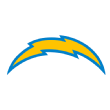
6. Los Angeles Chargers
Biggest strength: The Chargers got away with highway robbery in free agency following the 2015 season, as the team's brass signed then-four-year veteran Casey Hayward to a three-year, $15.3 million deal to play slot cornerback. After earning an 88.9 overall grade in his first year with the Bolts, Hayward turned it up a notch in 2017, earning the top-ranked overall grade among cornerbacks (96.4). He also finished the season ranked sixth in passer rating allowed among cornerbacks with 400-plus coverage snaps in 2017.
Biggest weakness: Former seventh-round USC product Hayes Pullard played just 186 defensive snaps in his first two years in the league before taking on more than double the workload with the Chargers in 2017. Pullard, however, failed to meet starter-level expectations across his 474 defensive snaps, turning in a 37.2 grade to rank 79th among the 87 qualifying off-ball linebackers this past season.
By the numbers: Chargers second-year edge defender Joey Bosa has now earned back-to-back season grades at 89.8 or above, a telltale sign of what's to come for the 22-year-old superstar. Among the 80 edge defenders with at least 400 pass-rush snaps over the past two seasons, Bosa ranks fifth in pass-rush productivity (12.80) and ninth in total pressures (134).

7. Pittsburgh Steelers
Biggest strength: The Steelers have a bunch of talent on both sides of the ball, but Antonio Brown is the one who stands out the most. His 2.87 yards-per-route-run average was second to only Julio Jones in 2017, with Brown ranking in the top 10 in that category every season since 2013.
Biggest weakness: Drafted with the expectation that he would become the next great Steelers outside linebacker, Bud Dupree has failed to live up to his draft billing so far. From 354 pass-rushing snaps in the 2017 regular season, he produced just 40 total pressures, and he has just 83 total pressures since he entered the league in 2015.
By the numbers: With Le'Veon Bell playing under the franchise tag once again, his workload deserves a mention. Bell led the NFL in carries with 321 in the regular season and was second behind Carolina's Christian McCaffrey with 103 targets in the passing game. Can that workload be sustained in 2018?

8. Dallas Cowboys
Biggest strength: Center Travis Frederick continued last season right where he left off in 2016 and is well on his way to establishing himself as one of the greats at the position. Frederick allowed just 12 pressures from his 555 pass-blocking snaps and has now gone three straight seasons without allowing a sack.
Biggest weakness: While the team's biggest strength is on the offensive line, its weakness lies on the opposite side of the trenches. Entering his third year, defensive tackle Maliek Collins has yet to register a grade above 46.8 and has struggled against the run, scraping together just 15 stops from his 471 run-defense snaps over the past two years.
By the numbers: In 2017, no player embodied the term "breakout" more than Dallas edge defender DeMarcus Lawrence, who ended the year with an elite grade of 94.1 -- the third-best mark among edge defenders. Lawrence put together a spectacular campaign, producing 79 total pressures, which was second to only Von Miller (83), and throughout the season, he managed to produce pressure on a whopping 18.6 percent of his pass-rushing snaps, which ranked first among all edge rushers.

9. Los Angeles Rams
Biggest strength: Interior defender Aaron Donald was the best player in the NFL in 2016 and still somehow managed to get better the following season, leading to his placement at No. 1 in our top-50 list for the second consecutive year. Donald led all players at his position in total pressures (71) despite playing in just 14 games in 2017.
Biggest weakness: Brought in as a third-round pick out of Louisville in 2015, Rams guard Jamon Brown underwhelmed in his first two years as a depth player and carried his poor play as the starter in 2017. He earned a 51.2 overall grade across 1,097 snaps last season, allowing 38 total pressures (30 hurries, 7 hits, 1 sack) in the process.
By the numbers: Overshadowed by Donald, Rams star running back Todd Gurley earned a career-high 92.0 grade as the focal point of Sean McVay's offensive attack. He ranked inside the top 15 in yards after contact per attempt (2.81) and forced missed tackles on the ground (38) in addition to his fifth-ranked yards per route run (2.14).
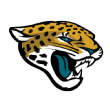
10. Jacksonville Jaguars
Biggest strength: The Jaguars fielded arguably the best defense in the NFL in 2017, and the most important player for them was CB Jalen Ramsey. Grading at 91.8, Ramsey has so far lived up to his high draft status, as he broke up 10 passes while intercepting another five. The entire defensive unit as a whole is a strength, but the play of the cornerbacks makes the unit play at a consistently elite level.
Biggest weakness: The Jaguars are losing their slot CB in Aaron Colvin (80.0 2017 grade) to division rival Houston and replacing him with D.J. Hayden, a player who has failed to record an interception the past two seasons and struggled in a part-time role with Detroit at 50.7 overall. That drop in talent for a vitally important position could see the Jaguars' vaunted secondary take a step back in 2018.
By the numbers: On 84 regular-season targets, CB A.J. Bouye allowed a catch rate of 45.2 percent and zero touchdowns while snatching six interceptions and breaking up eight more passes. On 19 postseason targets, Bouye allowed a catch rate of 63.2 percent and two touchdowns while getting his hands on just one pass for a breakup. Thank Antonio Brown for the drop in production, as he brought in those two touchdowns over Bouye.
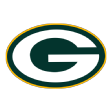
11. Green Bay Packers
Biggest strength: The most obvious name on this list, Aaron Rodgers had a season-ending injury in October that effectively ended Green Bay's playoff ambitions. Keeping Rodgers upright has proved profitable for the Packers, as he has posted a passer rating over 100.0 when not faced with pressure in every year of his outstanding career.
Biggest weakness: Justin McCray's pass-blocking efficiency while at either tackle position last year was just 92.4, tied for 68th at the position. Hopefully for the Packers, his switch inside to right guard will help him improve upon his 31 total pressures allowed last season.
By the numbers: While much of the offseason focus was on Green Bay's secondary, the front seven could certainly have helped out by being more effective on pass rushes in 2017. Last year marked the first time in the PFF era (since 2006) that no individual Packers defender notched at least 40 total QB pressures.

12. Seattle Seahawks
Biggest strength: The centerpiece to the Seahawks' defense for the past six seasons, veteran linebacker Bobby Wagner has been the epitome of consistency throughout his career and still managed to best previous career highs in 2017. Wagner's 96.7 grade ranked No. 1 among qualifying linebackers last season, and he enters the 2018 season as a clear-cut favorite to have a repeat performance.
Biggest weakness: Considered a project in the 2016 class, former first-round offensive tackle Germain Ifedi has struggled to meet expectations through his first two seasons in the NFL, earning sub-50.0 grades in 2016 and 2017. Ifedi has ideal size (6-foot-5, 325), but he doesn't have the technique to win against any of the league's top edge rushers. He tied for 52nd in pass-blocking efficiency (93.9) among qualifiers at his position last season.
By the numbers: Doug Baldwin is as sure-handed as they come in the NFL, as he was the only wideout last season to drop one or fewer passes with at least 55 catchable targets. A byproduct of his catching ability, Baldwin's 88.2 grade ranked sixth among qualifying wide receivers.
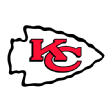
13. Kansas City Chiefs
Biggest strength: One of the few NFL tight ends to even be in the same conversation as New England's Rob Gronkowski, four-year veteran Travis Kelce has solidified himself as one of the league's best at the position. In addition to earning 87.0-plus grades in each of the past two seasons, Kelce has averaged 2.13 yards per route run across the two-year span, ranking second only to, you guessed it, Gronk.
Biggest weakness: After playing a reserve role for most of his four-year career, Daniel Sorensen took on a significant workload as the team's starting strong safety in 2017, playing in 90.2 percent of the team's defensive snaps (including the wild-card-game loss to Tennessee). Unfortunately for Kansas City, Sorensen earned a 40.7 grade across his 1,054 defensive snaps, ranking 82nd among the 87 safeties with at least 300 defensive snaps. He also missed a whopping 17 tackles.
By the numbers: Phenom Kareem Hunt had a year for the record books, as he forced the most missed tackles (61) by a rookie running back in a season in the PFF era. He also earned the third-highest grade (88.9) among all NFL running backs and ranked No. 4 in our elusive rating (73.1) among backs with at least 81 rushing attempts.
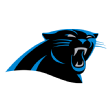
14. Carolina Panthers
Biggest strength: Inside linebacker Luke Kuechly remains one of the best defenders in the NFL. Kuechly was dominant against the run last season, ranking first in our run-stop-percentage metric, and he once again shined in coverage, allowing a passer rating of just 73.5, which also led linebackers.
Biggest weakness: What was a position of strength in 2017 now becomes a question mark. Replacing star guard Andrew Norwell (88.8 grade) will be no easy task for Jeremiah Sirles, who ended the year ranked 48th among 77 qualifying guards with a grade of just 45.2.
By the numbers: Cam Newton's passer rating from a clean pocket last season was just 87.1, which ranked 31st in the league and was more than 10 points below the league average. Even when passing from a clean pocket, Newton overthrew his intended target 9.2 percent of the time, which was the highest rate in the NFL.
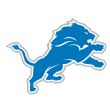
15. Detroit Lions
Biggest strength: No cornerback played the ball in the air better than Darius Slay last season, as he led the NFL in both interceptions (eight) and total passes defended (21). Opposing quarterbacks had a passer rating of just 55.6 against him, the third-lowest mark among cornerbacks who faced at least 50 targets.
Biggest weakness: While second-year inside linebacker Jarrad Davis is locked in to Detroit's starting lineup, the full-time position next to him is up for grabs heading into training camp. Christian Jones will need to have a better year than his 2017 campaign in Chicago if he is to win the job, as he allowed a passer rating of 112.2 on throws into his coverage while ranking 50th out of 52 inside linebackers in run-stop percentage (6.3).
By the numbers: The Lions' inside running game was abysmal in 2017, which is part of the reason why the team drafted center/guard Frank Ragnow in the first round. Detroit backs averaged just 3.1 yards per carry when rushing from guard to guard in 2017.

16. Buffalo Bills
Biggest strength: Tre'Davious White is one of the league's best young cornerbacks, and he took home our Rookie of the Year award in 2017. White ranked second among all cornerbacks with a 92.0 grade and led the position with 1,093 defensive snaps, finishing 14 of 17 games (including the playoffs) with a grade of at least 70.0.
Biggest weakness: The Bills have a handful of issues on their roster, but their biggest is with the cornerbacks after White. Phillip Gaines ranked 119th last season with a 35.9 grade, which was actually a slight improvement over the 34.8 he posted in 2016. Vontae Davis, who was released by the Colts midseason, was just ahead of him with a 45.2 grade, his second consecutive season in the 40s.
By the numbers: Buffalo's defense ranked last in the NFL in 2017, generating pressure on just 29 percent of opponents' passing plays. The Bills are hoping that Trent Murphy -- who still hasn't been fully cleared after tearing his ACL last August -- can bring some life to the pass rush after signing him away from Washington this offseason. Murphy ranked 10th among 3-4 outside linebackers in 2016 with an 11.8 pass-rushing productivity rating, and he ranked 11th with 55 total pressures; Jerry Hughes -- Buffalo's most productive pass-rusher of late -- has averaged 47.5 pressures over the past two seasons.
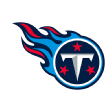
17. Tennessee Titans
Biggest strength: The Titans have a defense full of potential, led by lineman Jurrell Casey, one of the NFL's most underrated players. Casey is a disruptive force from the interior who consistently generates pressure, and his 89.7 grade last season just missed out on an elite rating. Excellent in rushing the passer and defending the run, Casey causes fits for offensive lines.
Biggest weakness: The Titans signed away safety Johnathan Cyprien from division rival Jacksonville in 2016 as he was coming off a career year, but his lone season of great play looks more like an aberration than a trend in the right direction. Cyprien, who had a 48.1 grade last season, has a lot to prove to make the team past 2018, as his contract becomes team-friendly next offseason.
By the numbers: Quarterback Marcus Mariota experienced an odd 2017 season, throwing more interceptions (14) than touchdowns (11) from a clean pocket and generating a passer rating of 81.7. Perhaps a change in offensive systems will help to improve those numbers, considering the Titans had the fewest receivers in route per pass play in 2017.

18. Cincinnati Bengals
Biggest strength: Geno Atkins remains one of the league's top interior defensive linemen, and he would probably get a lot more attention if not for the dominance of Aaron Donald in Los Angeles. Atkins racked up 70 total pressures in 2017, his third straight season with the pass-rushing version of a triple-double: producing double-digit sacks, hits and hurries.
Biggest weakness: The Bengals have a lot of strengths on defense, but linebacker Nick Vigil struggled in 2017. He missed 14 tackles over the first 12 weeks before an injury ended his season. Over those 12 weeks, just 25 of his 56 solo tackles resulted in a defensive stop.
By the numbers: Cornerback William Jackson III could be the NFL's next breakout star. Jackson allowed just 15 of the 43 passes thrown into his coverage to be caught in 2017, coming away with an interception and 10 pass breakups. Over two games against the Steelers, seven passes were thrown to Antonio Brown with Jackson in coverage. The result? Zero receptions and four pass breakups.

19. San Francisco 49ers
Biggest strength: Slotted as the No. 43 player entering the 2018 season on our annual top-50 list, interior defender DeForest Buckner put together a career year in 2017, ranking fifth among qualifiers in total pressures (52) and tied for sixth in grade (90.4). He also led players at his position with 19 quarterback hits.
Biggest weakness: Now three years removed from joining the league as a third-round pick, linebacker Eli Harold has struggled to move past his raw technique and produce in a rotational role with the 49ers. He earned a career-low 47.7 grade in 2017 and has yet to earn a grade above 63.6 in his career.
By the numbers: Quarterback Jimmy Garoppolo stole the Bay Area's heart in just five starts last season. In addition to winning all five games, Garoppolo ranked No. 1 in passing grade while under pressure, No. 1 in third-down grade and No. 5 in avoiding turnover-worthy plays among all qualifying signal-callers.

20. Baltimore Ravens
Biggest strength: Guard Marshal Yanda, who broke his ankle in Week 2 last season, is the best player on the Ravens' roster. His strength in pass protection, allowing just six total pressures in 2016, makes him one of the most dominant offensive linemen we've seen since we began grading.
Biggest weakness: James Hurst has struggled throughout his career, seeing time at tackle and guard. From 1,490 pass-blocking snaps since 2014, he has allowed 10 sacks, 21 hits and 77 hurries. In an ideal world, with Alex Lewis returning and the arrival of rookie Orlando Brown, Hurst will be a backup/sixth offensive lineman in heavy sets for the Ravens in 2018.
By the numbers: Things look good on the injury return front for Jimmy Smith, which could give the Ravens a solid cornerback pairing. Before he was injured late in the year, Smith allowed a passer rating of just 49.2 on throws into his coverage, with rookie Marlon Humphrey not far behind at 53.5.

21. Washington Redskins
Biggest strength: Despite playing through injury for most of his season, Trent Williams showed why he's one of the premier left tackles in the league. He allowed just 17 pressures from 363 pass-blocking snaps in 2017, and he was the only left tackle to play more than 350 snaps without allowing a sack.
Biggest weakness: You only have to slide a spot over on the offensive line to go from the strength of a talented unit to the weakest link. Guard Shawn Lauvao has ended his past three seasons with grades below 46.5, with his 2017 grade of 37.9 the lowest of his career. He allowed 28 total pressures from his 306 pass-blocking snaps, resulting in a pass-blocking efficiency of 93.0, which ranked 78th of 79 players at the position.
By the numbers: Edge defender Ryan Kerrigan put together another impressive season in 2017, and his grade of 85.6 was the highest of his career. Kerrigan finished the season with 64 quarterback pressures (14th most among all edge defenders) and 34 stops (tied for the 13th most), which makes him one of just three edge defenders who have tallied at least 55 quarterback pressures and 25-plus stops in each of the past four seasons, with Von Miller and Everson Griffen being the others.
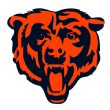
22. Chicago Bears
Biggest strength: Akiem Hicks has been a force on the Bears' defensive front since arriving in Chicago in 2016. While his 49 total quarterback pressures in 2017 fell just one short of matching his career mark set the prior season, his play against the run was even better. His 37 run stops led all 3-4 defensive ends, and his run-stop percentage of 10.7 ranked sixth.
Biggest weakness: With free-agent pickup Trey Burton expected to factor in more heavily in the passing game, the Bears will lean on Dion Sims for blocking. Unfortunately for Chicago, Sims struggled throughout 2017, ranking 62nd out of 69 qualifying tight ends with a grade of just 38.4 on run blocks.
By the numbers: Mitchell Trubisky needs to show improvement in a number of areas this season, one of them being against the rush. His 48.7 passer rating when under pressure ranked 34th out of 40 quarterbacks last season.
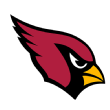
23. Arizona Cardinals
Biggest strength: Unfortunately for the Cardinals, the team's best player spent nearly all of 2017 on injured reserve. Star running back David Johnson suffered a season-ending wrist injury in the opener, averaging 2.2 YPC before he got hurt, which explains his low grade. He was coming off a breakout year in 2016, when he earned an 87.8 grade and led all running backs in forced missed tackles with 71. If healthy, Johnson can take some of the weight off veteran QB Sam Bradford's shoulders and reclaim his seat among the league's best running backs.
Biggest weakness: Cardinals tackle Andre Smith, previously one of the better players at his position, has fallen off a bit since his prime years (2011-14). The nine-year player out of Alabama has earned sub-60.0 grades in each of the past three seasons and, most recently, allowed 32 total pressures en route to a 92.4 pass-blocking efficiency rating. That tied for 68th among tackles with at least 178 pass-block snaps.
By the numbers: Transitioning into a slot receiver role last season, veteran Larry Fitzgerald hauled in 27 of 36 targets for 528 yards and four touchdowns from an inside alignment, ranking ninth in yards per route run (1.93) among receivers with at least 112 slot routes.
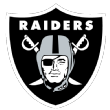
24. Oakland Raiders
Biggest strength: Khalil Mack has been Oakland's best player since joining the team as the fifth overall pick in the 2014 draft. Equally dominant against both the run and pass, Mack is the most complete edge defender in the NFL. Slotted as the No. 7 overall player entering the 2018 season on our annual top-50 list, Mack has earned elite (90.0 or above) season grades in each of the past three seasons and just missed the mark at 89.9 as a rookie. In 2017, Mack tied for second in total pressures (79) and ranked No. 1 in defensive stops (52).
Biggest weakness: Derek Carrier, signed this offseason to play opposite nine-year veteran Jared Cook, has done little in his five-year career to warrant a starting nod in this league. The former Beloit College product has played just 910 offensive snaps over the past five seasons, and in the lone season he played over 200 offensive snaps (2015), he recorded a paltry 57.8 grade.
By the numbers: Since a breakout 2016 season and signing a five-year, $125 million extension, Derek Carr has regressed. That's literally due to added pressure. When pressured in 2017, the Raiders QB completed just 52 of 122 passes for two touchdowns, 694 yards and nine interceptions and a 40.8 passer rating -- a 29.2-point drop-off from his 70.0 passer rating under pressure in the previous season.
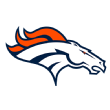
25. Denver Broncos
Biggest strength: Von Miller has been the epitome of consistency across his NFL career, earning elite season grades in each of his seven years in the league. Only 22 edge defenders have earned 90.0-plus grades in a single season in the PFF era, and Miller has done it seven times. He led all edge defenders in total pressures in 2017 and ranks No. 1 among edge defenders with at least 400 defensive snaps from 2016 to 2017 in combined pass-rush productivity (14.51).
Biggest weakness: Cast into a starting role at right guard for the team's final five games of the 2017 season, rookie fifth-round pick Connor McGovern struggled down the stretch. He allowed 16 total pressures in just 231 pass-block snaps, leading to a 94.7 pass-blocking efficiency rating -- 68th among the 75 guards with at least 200 pass-block snaps in 2017.
By the numbers: New Broncos quarterback Case Keenum put together a career year with the Vikings in 2017. Keenum tied for fourth in adjusted completion percentage (76.5) and ranked seventh in passer rating under pressure (78.5) among qualifying signal-callers en route to a career-high 85.3 grade.
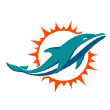
26. Miami Dolphins
Biggest strength: The ageless Cameron Wake ranked second among 4-3 defensive ends last season with a 13.5 pass-rushing productivity rating. Wake once again had more than 60 total pressure in 2017, something he has done every season of this decade except for an injury-shortened 2015.
Biggest weakness: The Dolphins have their fair share of question marks, but their most glaring weakness comes at right guard, a spot currently occupied by Jesse Davis, an undrafted free agent out of Idaho in 2015 who made his professional debut last year, starting the final 10 games at various spots on Miami's offensive line. Davis ranked 63rd among guards last year with a 40.2 grade. Behind him on the depth chart is Ted Larsen, who has finished five of his seven seasons with a grade south of 50.0, including last season's 39.4.
By the numbers: Ryan Tannehill ranked seventh among quarterbacks in 2016 with a 77.4 adjusted completion percentage, and he has finished every season of his career with a grade above 80.0. Jay Cutler ranked 22nd among QBs last season with an adjusted completion percentage of 72.0 and posted just a 62.5 grade.
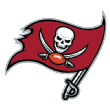
27. Tampa Bay Buccaneers
Biggest strength: Gerald McCoy continued to be a one-man wrecking crew on the Buccaneers' defensive front and ended 2017 with 47 quarterback pressures, the 10th most among all interior defensive linemen. McCoy now has six straight seasons of 40 or more pressures, which is tied for the longest active streak in the league among interior defenders.
Biggest weakness: On an offensive line that has one of the better right tackles in the league in Demar Dotson, the left tackle spot is a relatively weak link for Tampa Bay. Donovan Smith ended the 2017 campaign with a 51.9 grade after he allowed a whopping 42 quarterback pressures in 658 pass-blocking snaps.
By the numbers: Quarterback Jameis Winston showed a dramatic improvement in performance under pressure and ended 2017 with the league's second-best passer rating (84.4) on attempts under pressure.

28. New York Giants
Biggest strength: With all due respect to Odell Beckham Jr. -- whose 51.6 grade was thanks to an injury-shortened season in which he caught 25 passes for 302 yards in four games -- the honor goes to safety Landon Collins, who over the past two seasons has emerged as arguably the best strong safety in the league. While his 2017 season wasn't quite up to his impeccable 2016 standard, it was still good enough for an 88.5 grade, the sixth-best mark among safeties. Over the past two seasons, Collins has piled up an astonishing 83 defensive stops, which is 23 more than the next-closest player at the position.
Biggest weakness: The offensive line remained an issue for the Giants in 2017, and tackle Ereck Flowers struggled for the second straight year. Over the past two seasons, no tackle has given up more quarterback pressures than Flowers' 100, and his 2017 performance ranked 56th of 81 qualifying offensive tackles.
By the numbers: Damon Harrison might have been robbed of a Pro Bowl nomination, but the defensive tackle continued to showcase why he's the best run defender in the NFL. Harrison once again led all interior defensive linemen with 40 run stops in his 299 run-defense snaps. In those plays, he made the stop 13.4 percent of the time, the best mark among all players at the position. Incredibly, Harrison has now led the league in run-stop percentage in five of his six professional seasons.
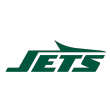
29. New York Jets
Biggest strength: From the moment he stepped foot on an NFL field, Leonard Williams has been one of the better interior defenders in the league, finishing all three of his professional seasons with an overall grade of at least 84.8. Williams ranked eighth among 3-4 defensive ends with a 7.6 pass-rushing productivity rating, and he was fifth among those at the position with 46 total pressures, a total he has reached in each of his three seasons.
Biggest weakness: Sometimes teams really hit with their first-round pick, and other years they really miss. In 2015 the Jets nailed it when they selected Williams sixth overall, but the same can't be said about the 20th overall pick they used on Darron Lee in 2016. Lee ranked 86th among linebackers last season with just a 34.9 grade after he posted a 36.2 grade as a rookie. Lee was targeted 69 times in coverage last season and surrendered 50 catches for 570 total yards and three touchdowns to go with no interceptions.
By the numbers: When Josh McCown threw the ball in 2.5 seconds or less, he had a 103.4 passer rating last season, compared to a 78.0 passer rating when he held on to the ball for 2.6 seconds or more. That 25.4 decrease in passer rating was the seventh-largest among quarterbacks in 2017.
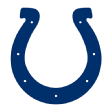
30. Indianapolis Colts
Biggest strength: Most Colts fans have been disappointed with the overall play of the team, especially the defense, but Indianapolis has several promising players, with Jabaal Sheard coming off an elite 91.3-graded season despite registering just five sacks. Sheard was able to generate 66 pressures with a pass-rush productivity of 11.6. Considering the value of pressuring the QB and that pressures are more predictive of future success than sacks alone, Sheard should continue to be a force off the edge for Indianapolis.
Biggest weakness: While the Colts' offensive line as a whole struggled in 2017, GM Chris Ballard made moves to improve the unit and should see an uptick. Where the Colts have a glaring weakness is at the inside linebacker position, with Antonio Morrison coming off a season in which he graded at 35.8, struggling in coverage and run defense. Quarterbacks have had success when targeting Morrison in coverage the past two seasons, as his 119.0 passer rating allowed highlights his struggles.
By the numbers: Wide receiver T.Y. Hilton experienced his worst season since his rookie year, with 1.74 yards per route, and he forced just two missed tackles. Hilton was sure-handed when targeted, though, dropping just four passes, the second-lowest drop rate of his career.

31. Houston Texans
Biggest strength: Full disclaimer -- a healthy J.J. Watt is the Texans' biggest strength. But considering his injuries the past two seasons, it's difficult to judge what Watt will be capable of in 2018. The Texans' next best is wide receiver DeAndre Hopkins, who finished 2017 with the fourth-highest grade of any wide receiver at 90.6. There might not be any better player at roping in sideline passes and using his tremendous body control to keep his feet inbounds.
Biggest weakness: If the Texans want to take the next step with sensational first-round quarterback Deshaun Watson, protecting him must be addressed, as the Texans' offensive line is one of the worst in the NFL. Most unfortunate for Watson is the play of left tackle Chris Clark, who is coming off a season in which he graded as one of the worst in the NFL at 37.7. Over the past two seasons, Clark has allowed an incredible 12 sacks, 16 hits and 71 hurries for a pass-blocking efficiency of 92.6.
By the numbers: Watson's 124.1 passer rating when kept clean led the NFL through the first eight weeks of the season before a knee injury forced him out for the year. This bodes well for the young signal-caller, as that stat is one of the most stable metrics for quarterback play. While that mark is sure to regress, it's a good sign for Texans fans that Watson was able to deliver when protected.

32. Cleveland Browns
Biggest strength: Coming off an 0-16 season, some optimism is needed for the Browns, and it comes in the form of last season's No. 1 overall draft pick, Myles Garrett. Bothered by injuries early in the year, he found success once he got going, racking up 7 sacks, 11 hits and 19 hurries in 11 games.
Biggest weakness: If Shon Coleman is to be the man to replace Joe Thomas at left tackle, expect a big drop-off. Not only was Thomas one of the best offensive linemen of all time, but Coleman struggled at right tackle in 2017, allowing 6 sacks, 9 hits and 49 hurries.
By the numbers: On a limited sample size, Josh Gordon led the Browns with 2.01 yards per route run last season, also good enough for 15th among wide receivers in the NFL. A full season of Gordon would give the Browns one of the top weapons in the NFL.
